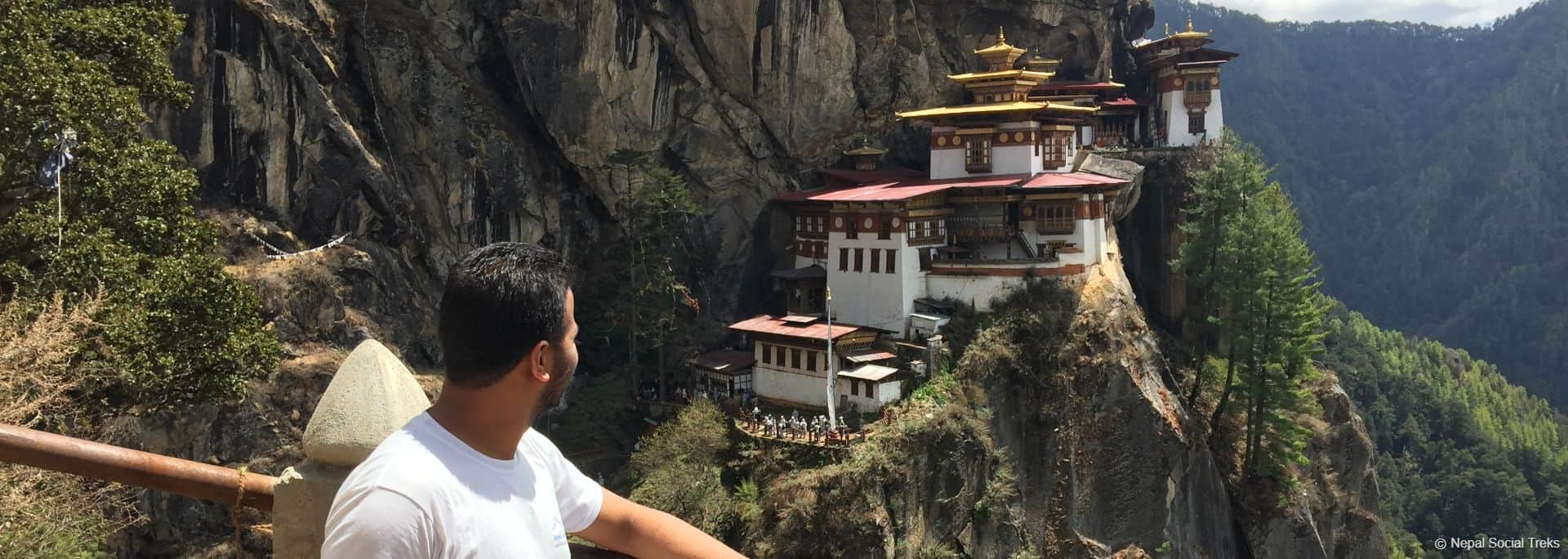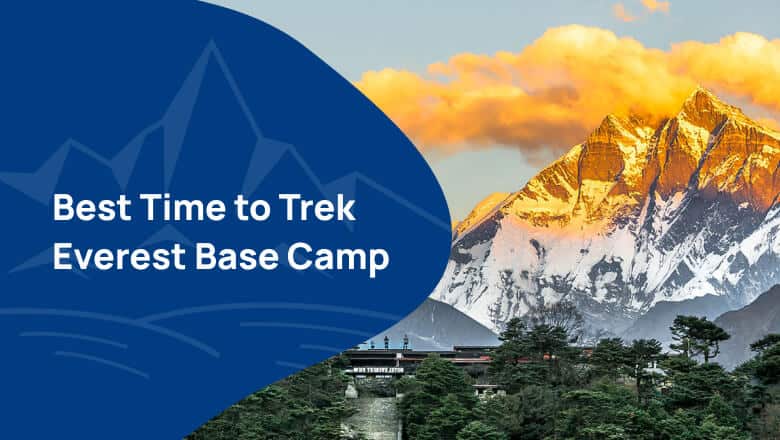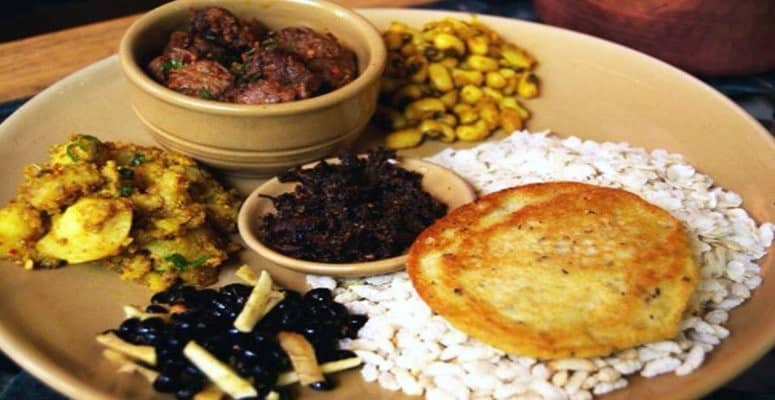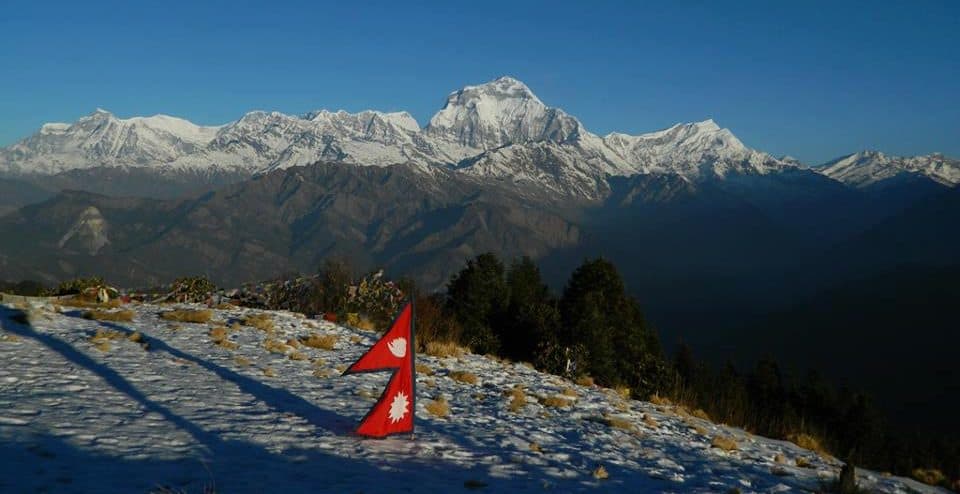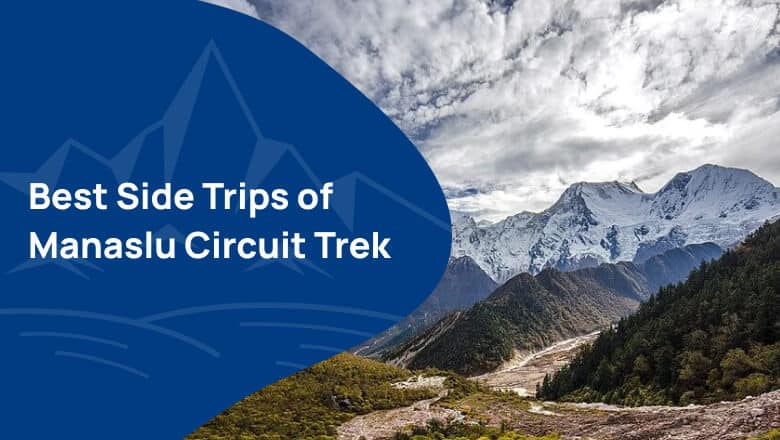The Himalayan Kingdom of Bhutan is fast emerging from centuries of self imposed isolation. First opened to tourists in 1974 in very regulated manner upon the coronation of present Bhutanese King, this mountain kingdom is still perhaps the world’s most exclusive tourists destination. Due to the Royal Government’s far-sighted policy to preserve the countries pristine environment and its culture, the harmful effects to industrialization and mass tourism on the environment and the traditional lifestyle of Bhutanese have been carefully avoided. This makes Bhutan a truly unique destination. An unspoiled country with majestic mountains, a unique cultural heritage preserved for many centuries, an architectural style like no other, a landfill of warm hearted and friendly people, reveals a true paradise in the lost era of the present century.
Bhutanese strategy for the revamp of the tourism sector brings them back to their roots, of ‘High Value, Low Volume’ tourism, where they meet the needs of tourists while protecting their people, culture, values, and environment.
“A tourist shall be liable to pay a tourism levy known as the Sustainable Development Fee of USD 200 per night which may be revised by the Competent Authority from time to time”.
Contents
Gateways into Bhutan
Travel by air
At 2,225 metres (7300 feet) above sea level, Paro is surrounded by mountains that reach heights of up to 4,876 metres (16,000 feet). Drukair and Bhutan Airlines are the two airlines that currently fly to Bhutan. Additionally, domestic airports are located in the eastern Bhutanese cities of Yonphula, Bumthang, and Gelephu.
The flight into Paro valley, which is closer to the mountain summits than most other planes in the world, makes flying into Bhutan’s Paro International Airport a generally thrilling experience. One of the most thrilling flights is between Paro and Kathmandu since the plane goes over four of the world’s five highest mountains. In good weather, you may take in the breathtaking vista of Mt. Everest, Lhotse, Makalu, and Kanchenjunga as you soar higher up.
The airlines have hubs at Singapore’s Changi Airport, Bangkok’s Suvarnabhumi International Airport , Delhi’s Indira Gandhi International Airport and Kathmandu’s Tribhuvan International Airport.
Flight By Bhutan Airlines from different destination to Paro International Airport
Bangkok, BKK, Suvarnabhumi International Airport, Thailand
Kolkata, CCU, Netaji Subhash Chandra Bose International Airport, India
Kathmandu, KTM, Tribhuvan International Airport, Nepal
Delhi, DEL, Delhi International Airport, India
Gaya, GAY, Bodhgaya Airport, India
You can search your flight Schedule through these links:
Flight by Druk Airlines
Delhi, DEL, Delhi International Airport, India
Kathmandu, KTM, Tribhuvan International Airport, Nepal
Bangkok, BKK, Suvarnabhumi International Airport, Thailand
Bagdogra Airport, Siliguri, India
Hazrat Shahjalal International Airport, Dhaka, Bangladesh
You can search your flight Schedule through these links:
Travel By Land
Phuentsholing, Gelephu and Samdrup Jongkhar are the only land border areas open to tourists.
The largest airport in the nation, Bagdogra, is located around 170 kilometers (km) east of the southwest Indian town of Phuentsholing. After passing through Phuentsholing, you begin your journey to Thimphu, the capital city, and it takes approximately six hours to traverse the 170 km route.
In the south-central region of the country, at Gelephu, lies another gateway to Bhutan. In order to go to Thimphu, which is around 250 kilometres away, the journey travels through subtropical and mountainous areas of Bhutan. There will be three transit stops along the nearly ten-hour journey.
Around 150 kilometres from Guwahati, the capital of Assam, the south-eastern Bhutanese district of Samdrup Jongkhar borders the Indian district of Darranga, Assam. From Guwahati, it takes about three hours to get there.
When visiting Bhutan,by Samdrup Jongkhar point. From there, travel the lateral route through Trashigang, Mongar, Bumthang, Trongsa, Wangdue Phodrang, and finally the capital, Thimphu. You will need at least three days to travel approximately 700 miles to reach Thimphu.
General Information about Bhutan
ENTRY OF FOREIGNERS
The Department of Immigration, Ministry of Home and Cultural Affairs, Royal Government of Bhutan, controls entry for all foreigners.
Nationals of India
When they arrive at the port of entry, citizens of India are eligible for an entry permit. EITHER a voter identity card OR a passport is required of each person. Other forms of identification are not accepted. Indian citizens who are travelling there as tourists must first get an e-permit.
Nationals of other countries
Unless specifically exempted by a bilateral agreement, nationals of all nations other than India must get an electronic visa before entering Bhutan.
SAARC Visa Exemption Sticker
South Asian Association for Regional Cooperation (SAARC) nationals are exempt from needing an eVisa or entrance permission if they have a valid SAARC Visa Exemption Sticker.
Tourists
Any foreign visitor planning a vacation to Bhutan must arrange their trip through an authorized travel company. Details Packages are here at Nepal Social Treks
Employment
Prior to submitting an application for an e-visa or entrance permit, any foreigner planning to work in Bhutan for a period longer than 30 days must first receive work authorization from the Department of Labor, Ministry of Labor and Human Resources. The Ministry of Labour and Human Resources’ website, https://www.molhr.gov.bt, has information.
Study
Any foreigner planning to attend school in Bhutan must apply for an electronic visa and an entry permit through the institute, college, or school before departing for Bhutan. Validity criteria for passports The minimum passport validity required from the desired departure date from Bhutan is six months.
Passport Validity
The minimum passport validity required from the desired departure date from Bhutan is six months.
SERVICE: ISSUANCE OF E-VISA FOR TOURISTS
Eligibility: A foreign national intending to visit the Kingdom as a tourist upon fulfilling the requirement as per the Immigration Act and Rules.
Documents Required:
e-Visa application routed through the Tourism Council of Bhutan.
a copy of your passport and two passport-size photos.
Turn Around Time: 3 working days after the application has been endorsed by the Tourism Council of Bhutan. Fee: Visa Fee= US$40 ( till the date this was written)
Country Restriction for Entry
USD 10,000
Currency Restriction for Exit
USD 10,000
Traveling to Bhutan?
Here are the new Rules:
The new Bhutan Travel rule will increase the Sustainable Development Fee (SDF), which was formerly USD65 per person per night for visitors, to USD200 with extra costs for food, accommodation, transport, and everything else that used to be part of the package. . This fee will support initiatives that encourage carbon-neutral travel and the development of more sustainable travel industry. This involves reducing the carbon footprint of visitors and retraining industry employees. Indian visitors will pay a predetermined price that will be changed at a later time.
The Minimum Daily Package Rate (MDPR) will also be eliminated at the same time. The fare is the lowest amount that every traveler must pay for an all-inclusive package holiday to Bhutan.
Since tourists may only select pre-packaged excursions offered by tour operators, the MDPR has historically frequently restricted the tourist experience. In the future, tourists will have the freedom to work directly with service providers and pay them properly. The new fees took effect on June 20, 2022. The Minimum Daily Package Rate (MDPR) will also be eliminated at the same time. The fare is the lowest amount that every traveler must pay for an all-inclusive package holiday to Bhutan. The country is undergoing extensive change at the moment, affecting everything from the financial industry to the public service. The improvements are intended to increase the population’s proficiency in terms of skills, knowledge, and experiences, which will help develop Bhutan’s human capital.
Bhutanese strategy for the revamp of the tourism sector brings them back to their roots, of ‘High Value, Low Volume’ tourism, where they meet the needs of tourists while protecting their people, culture, values, and environment.
“A tourist shall be liable to pay a tourism levy known as the Sustainable Development Fee of USD 200 per night which may be revised by the Competent Authority from time to time”.
Therefore, all tours confirmed before June 20, 2022, can avail of rates applicable under the Tourism Levy Act of Bhutan 2020, the minimum daily package rate (MDPR), which includes the royalty of USD 65.
June 20 is the day Tourism Levy Bill 2022 was tabled in the National Assembly or the day it comes into effect.
Things to know before you travel to Bhutan
Asia’s Bhutan is situated in the Himalayas. It is a landlocked nation east of Nepal that has never been colonized, situated between Tibet, China, and India. The nation is primarily Buddhist, and Thimphu serves as the capital. Bhutan has little over 789,589 residents, making it the second least populous country in all of South Asia behind the Maldives.
1) Bhutanese Lifestyle
Bhutan offers the adventure you’re looking for with its remote monasteries, high elevations, vibrant culture, and hot cuisine. In the tourism industry, the word “authentic” is more overused but Bhutan is a destination that can teach us what cultural authenticity really means. It was only a few decades ago that tourism was introduced. Through years of seclusion, the hermit kingdom has maintained its rich cultural identity. On the streets, traditional clothing is still popular, and Dzongkha and Sharchop are the two local languages spoken. Every building still boasts native Dzongkha architectural details, and Buddhism permeates almost every facet of daily life.
2) Bhutanese Food
Emma datshi is a dish made from boiled chillies and local cheese that is quite spicy. They consider it to be their de facto national dish, a point of cultural pride, and a staple of each meal. Chillies are one of the favourite vegetables of Bhutanese.
The first taste is always fiery, but get past the spice and it becomes easy to appreciate the creamy, salty, somewhat fruity flavor. Paired with native red rice, emma datshi is a filling supper.
If you’re worried that this dish will be too hot, relax—local chefs frequently temper the heat for visitors.
3) Bhutanese Nightlife and style
Drayang are the entertainment bars in Bhutan in the bigger towns and cities. These domestically sourced nightclubs have modest timber interiors and disco balls and flickering lighting.Singing is the main form of entertainment. Customers select performers from a talent pool on-site and pay them to appear on stage too.
Here’s how you can get a taste of Bhutan extravagant nightlife:
- Club Ace
- Mojo Park
- Space 34
- Club K
- Millennium Club
- Vivacity
- Tashi Tagay Drayang
- Cum Bars
- Uma Paro Bar
- Zest Bar and Lounge
4)Tourist Places in Bhutan
You will undoubtedly benefit from knowing about some of the tourist attractions in Bhutan that one should see on their trip there on your subsequent vacation. To learn about all the tourist attractions in Bhutan that you may visit with friends and family, or solo scroll down. Your jaw will drop at each of these locations. Bhutan is a place that has it everything, whether it be a natural wonder or an architectural wonder!
Here is the list of some tourist sites in Bhutan
- Rinpung Dzong – Admire Bhutanese Architecture
- Chele La Pass – Get Views Of The Himalayas
- Punakha Dzong – Second-Largest Dzong In Bhutan
- Buddha Dordenma Statue – Gape At The Bronze Statue
- Dochula Pass – Ideal For A Picnic Day
- Tiger’s Nest – Must-Visit Place Of Bhutan
- Phobjikha Valley – Haven For Bird Watchers
- Chomolhari – Explore Untrodden Paths While Trekking
- Norzin Lam Street – Ideal For Souvenir Shopping
- Main Street – Time For Shelling Out Money
- Tashichho Dzong – Largest Landmark Of Thimpu
- Drukgyel Dzong Ruins – Dig Into Bhutan’s History
- Motithang Takin Preserve – Explore Different Species Of Animals
- National Museum of Bhutan – Know More About Bhutan
- Simply Bhutan – Learn About Diverse Facets Of Bhutan
- Punakha Suspension Bridge – Traverse The Lane Of Flags
- Haa Valley – Explore The Villages Of Bhutan
- Jangtsa Dumtseg Lhakhang Temple – Hear About Old Folk Tales
- Namgay Artisanal Brewery – Tingle Your Taste Buds
- Zuri Dzong Fort – Get Scenic Views Of Paro Valley
- Drukgyel Dzong Monastery – Perfect For Folklore Freaks
- Samdrup Jongkhar – Buy Bamboo & Silk Products
- Lhuentse – Untouched By Industrialization
- Gasa Tshachu – Relax In The Hot Springs
- ThrumshingLa National Park – Perfect Nature Retreat
- Gangtey Monastery – Explore The Vibrant Culture Of Bhutan
- The Folk Heritage Museum – Oldest Mud & Wood Structure
- Jigme Dorji National Park – 2nd Largest National Park In Bhutan
- Simtokha Dzong – Colossal & Alluring
- Tango Buddhist Institute – For Spiritual Awakening
- Talo Village – Picturesque Landscapes
- Dagala Thousand Lakes – Surreal & Enchanting
- Royal Manas National Park – Haven For Wildlife Lovers
- Choki Traditional Art School – Souvenir Shopping
- Jungshi Handmade Paper Factory – One-of-a-kind Experience
- Royal Textile Academy of Bhutan – Traditional Attire Exhibition
- Trashi Chhoe Dzong – For Religious Celebrations
- Tower Of Trongsa – The Cultural History Of Bhutan
- Hidden Valleys Of Bumthang – Set Out On A Quest
- Torsa Strict Nature Reserve – Untouched Natural Beauty
- Sakteng Wildlife Sanctuary – The Newest Addition
- Mo Chhu River – A Beautiful Scenery Awaits
- National Institute for Zorig Chusum – To Witness Art
- Handicrafts Market – For Local Goods
- Memorial Chorten – A Peace Statue
- Druk Path – The Countryside Trek
- Bumdeling Wildlife Sanctuary – UNESCO World Heritage Site
- Phuentsholing – Hidden Gem
- Trashiyangtse – Reflecting Bhutan’s Traditional Art
- Wangchuck Wildlife Sanctuary – Savour the Adventure
A. Rinpung Dzong – Admire Bhutanese Architecture
The 16th-century Rinpung Dzong is a stunning dzong (fort) with high walls. Rinpung Dzong, sometimes referred to as the Fortress on a Heap of Jewels, is one of the top tourist destinations in Bhutan and a prime example of traditional Bhutanese architecture. For its precise location, consult the map of tourist attractions in Bhutan.
Location: Paro District, Bhutan
Key attractions: Beautiful temple and wall paintings related to Buddhism
Timings: 9 AM to 5 PM
How to reach: You can take a taxi or hire a bike from anywhere in Paro to get to this spot.
Places To Stay: Norwangs Villa, Nirvana Inn, The Village Lodge Paro, Hotel Ratna Vara,
B. Chele La Pass – Get Views Of The Himalayas
One of Bhutan’s most well-known tourist destinations is Chele La pass, which is situated at a height of roughly 3,989 meters. The stunning pass in Paro is on the way to the Haa Valley. You can see the Jomolhari mountain from here, as well as the nearby peaks on the northwest side and the valleys of Haa and Paro, on a great, clear day. A lot of Paro’s hotels, resorts, and homestays also provide frequent, reasonably priced tours to Chele Le Pass.
Location: Between the Haa and Paro valleys, Bhutan
Key attractions: Magnificent panoramic view of the valleys, gushing waterfalls, alpine flowers, and clouds drifting above the hills
Timings: Throughout the day
How to reach: Take a taxi from Paro to get to this point on the Bondey-Haa Highway
Places to stay: COMO Uma Paro, Le Meridien Paro
C. Punakha Dzong – Second-Largest Dzong In Bhutan
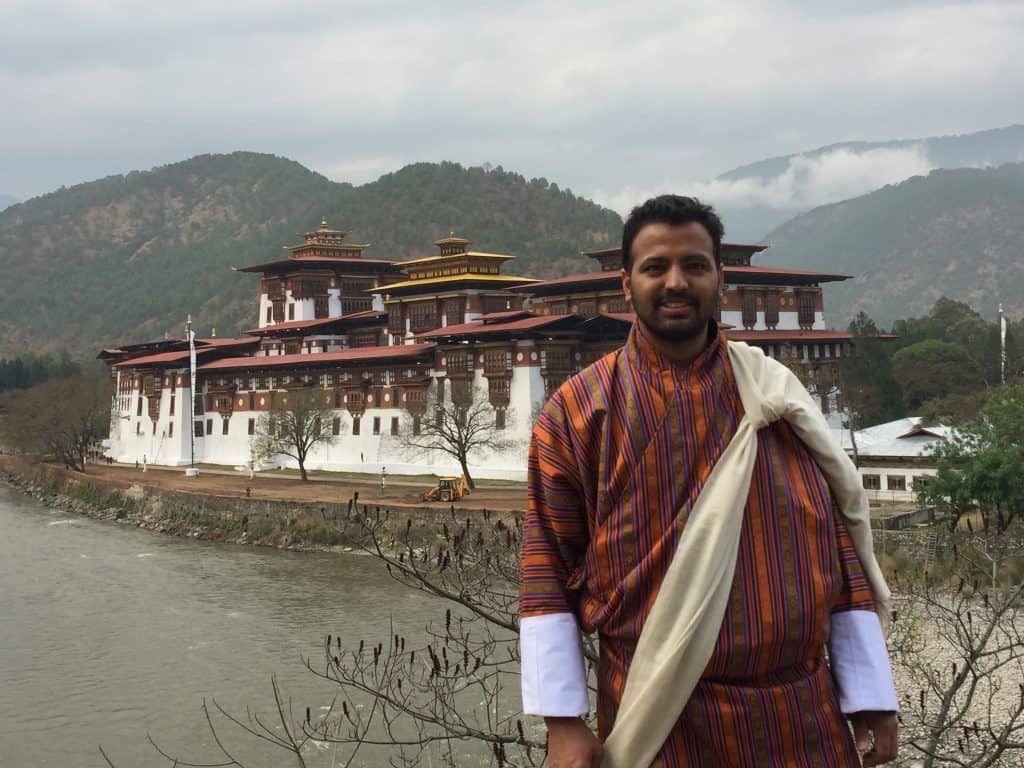
The second-largest dzong in Bhutan (The Land of Thunderbolt), Punakha Dzong is renowned for its magnificent design. The dzong, one of Bhutan’s top tourist attractions, conveys eloquently about the lovely tales and customs of Buddhist culture. On your sightseeing tour to Bhutan, do not overlook this.
Location: Punakha, Bhutan
Key attractions: The intricate paintings and the architecture of the fort, sacred relics of the southern Drukpa Lineage of Kagyu school of Tibetan Buddhism, and the sacred remains of Ngawang Namgyal and the tertön Pema Lingpa.
Timings: 8 AM to 5 PM
How to reach: Take a bus or taxi from Paro or Thimphu to Punakha. Further, take a taxi or bike to this point in Punakha.
Places To Stay: Hotel Vara, The Four Boutique, Hotel Zangto Pelri, Damchen Resort, Chimi Lhakhang Village Homestay
D. Buddha Dordenma Statue – Gape At The Bronze Statue
The Buddha Dordenma Statue is a 169-foot-tall statue of the Buddha that was constructed in Thimphu at the base of the hills. One of Bhutan’s top tourist destinations is this recognizable gold and bronze statue, which is visible from practically anywhere in Thimphu.
Location: Kuenselphodrang, Thimphu, Bhutan
Key attractions: The 169 feet tall Buddha statue, thousands of smaller bronze and gold statues of Lord Buddha, and the surrounding Kuensel Phodrang nature park
How to reach: Take a taxi from anywhere in Thimphu to get to this statue.
Places To Stay: Hotel Oro Villa, Hotel River Valley
Timings: 9 AM to 5 PM
E. Dochula Pass – Ideal For A Picnic Day
In honor of the Bhutanese soldiers who lost their lives fighting Indian separatists, Dochula Pass is a stunning pass with 108 Chortens or Stupas. The Dochula Pass is one of the top tourist destinations in Bhutan because of the wonderfully constructed temple and stupas and the gorgeous Gangkar Puensum peak in the distance. On the route to Punakha and Thimphu, there is a pass called Dochula.
Location: East-West Road from Thimpu to Punakha
Key attractions: Panoramic view that gives a glimpse of the peak of the sacred Himalayan mountain – Chomolhari, Druk Wangyal Lhakhang temple, and the fusion paintings on the temple walls
How to reach: Take a taxi from Thimphu or Punakha to get to this point.
Places To Stay: Mendrelgang Homestay, Yangki Guest House, Thori Resort, Hotel Pundarika, Choni Apartment
F. Tiger’s Nest – Must-Visit Place Of Bhutan
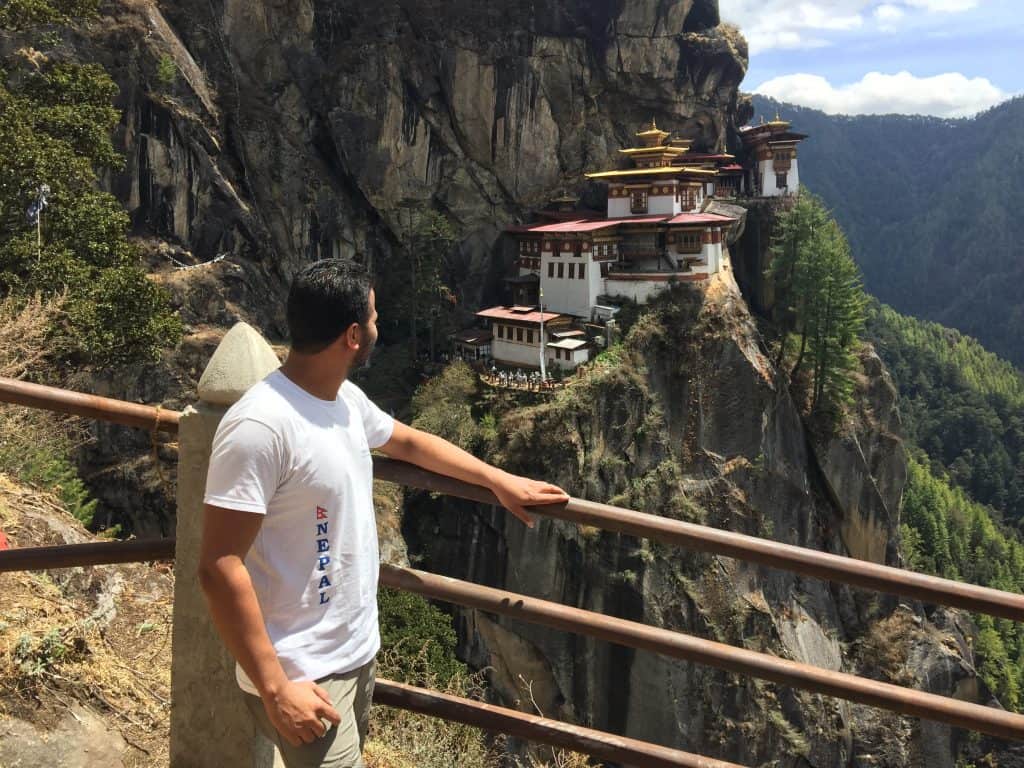
One of the must-see locations in Bhutan is Tiger’s Nest, also known as Taktsang Monastery. It is renowned for housing Guru Rinpoche’s stunning and revered monastery. It is regarded as a holy site and is a short, simple hike that offers sweeping views of the Paro valleys. Legend has it that Guru Rinpoche, who is also regarded as the second Buddha, arrived at this location on the back of a tigress to expel a local demon. He then meditated here for three months. This location, which hangs on a cliff over a dense forest of thousands of different varieties of rhododendrons and blue pine, is Bhutan’s holiest site.
Location: Taktsang trail BT, Taktsang trail, Bhutan
Key attractions: The tiger’s nest, the cave temple inside the monastery, the majestic views, and the many small temples inside the premises of the monastery.
How to reach: Take a shared cab to the starting point of the path leading to the monastery. Trek to the top.
Places To Stay: Norwangs Villa, Nirvana Inn, The Village Lodge Paro, Hotel Ratna Vara, The chhodens, Zhideychen Resort
Timings: Always open
G. Phobjikha Valley – Haven For Bird Watchers
A little town in Bhutan’s centre is called Phobjikha (The Land of Thunderbolt). Phobjikha, one of the most stunning places to visit in Bhutan, is surrounded by mountains, lush vegetation, and valleys, making it one of the country’s top tourist destinations. A day’s hike through the town and the forests will take you through the area’s stunning vistas and passes.
Location: Wangdue Phodrang, Bhutan
Key attractions: Black-necked cranes migrate to Phobjikha from November, and hike through the valleys to witness spectacular views of the birds and the amazing greenery.
How to reach: Take a taxi to Wangdue from Thimphu or Phuentsholing. Then take a bus or shared cab from Wangdue to Phobjikha Valley.
Places To Stay: The Valley Camp, Dewachen Hotel and Spa, Phuntsho Chholing Lodge, Gangtey Gonpa, Yue-Lo-Ki Guest House Gangtey
H. Chomolhari – Explore Untrodden Paths While Trekking
Known mostly for its hikes, Chomolhari is one of the top tourist destinations in Bhutan. The Chomolhari Trek, beginning in Paro, is one of Bhutan’s most difficult treks. It is fascinating and, after a challenging trek, rewards hikers with beautiful vistas at an altitude of roughly 5,000 metres. The expedition, which lasts an average of 7 to 15 days, is definitely for thrill seekers.
Location: Near Punakha, Bhutan
Key attractions: The glacial lakes, the snow capped mountains and splendid views of the landscapes are a treat to the eyes
How to reach: Take a taxi from Thimphu or Punakha itself to the starting point of Chomolhari trek.
Places to stay: The Valley Camp, Dewachen Hotel and Spa, Phuntsho Chholing Lodge
Timings: Throughout the day
I. Norzin Lam Street – Ideal For Souvenir Shopping
The most picturesque tourist destinations in Bhutan are most likely found in the capital. Norzin Lam’s main street is lined with stores that offer a variety of goods, including crafts, woolen clothing, souvenirs, and regional wine. If you’re not heading on to Bumthang, certain items there are worth getting while being relatively pricey.
Location: Thimphu, Bhutan
Key attractions: Textile building and the textile shops in the middle lane of Norzin Lam for buying some of the best handmade textiles, including Gho and Kira – the traditional attire of Bhutan for men and women respectively
How to reach: You can take a taxi or just walk to this point from anywhere in Thimphu
Places to stay: Hotel Oro Villa, Hotel River Valley
Timings: Throughout the day
J. Tashichho Dzong – Largest Landmark Of Thimpu
One of the most stunning tourist destinations in Bhutan is Tashichho Dzong, which is situated at the city’s northernmost point. This monastery, which is located on the western banks of the River Wang Chu, is a popular fortification on the edge of the city’s border and is beautiful to view.
Location: Chhagchhen Lam, Thimphu, Bhutan
Key attractions: It has not only served as the summer capital of the country but also as the royal seat of Druk Desi who is also called the Dharma Raja.
Timings: Monday to Friday – 9 AM to 5 PM, and 5:30 PM to 6 PM; Saturday and Sunday – 9 AM to 5 PM
How to reach: Take a taxi from anywhere in Paro to get here.
Places To Stay: Sambhav Service Apartments
Accommodation at Bhutan
Bhutan offers a wide choice of accommodation options, from cosy Bhutanese guesthouses to luxurious resorts. Bhutan accommodates their guests in the quality hotels,and guesthouses that have been carefully selected for their comfort, service, ambience, cuisine, amenities, cleanliness and management. For those travellers who prefer a higher level of comfort bhutanese also offer a boutique range of luxurious lodges and resorts with spa and yoga facilities. Bhutanese accommodations are always flexible in mixing and matching accommodation to suit the itinerary. The hotel price ranges from about $30 to $3000+
Few Luxury Hotels at Bhutan are mentioned below:
The Postcard Dewa- Thimphu
Le Meridien Thimpu
Taj Tashi – Thimphu
Le meridien Paro, Riverfront – Paro
Six Senses Thimpu
COMO Uma Paro
COMO Uma Punakha
Naskel Boutique Hotel & SPA – Paro
Few Budget Hotels at Bhutan are:
Tiger’s Nest Resort- Paro
The Village Lodge Bumthang
The Four Boutique Hotel – Punakha
The Valley Camp- Phonjikha
Himlayan Tashi Phuntshok Hotel – Paro
Hotel Osel – Thimphu
Hotel Riverside – Thimphu

